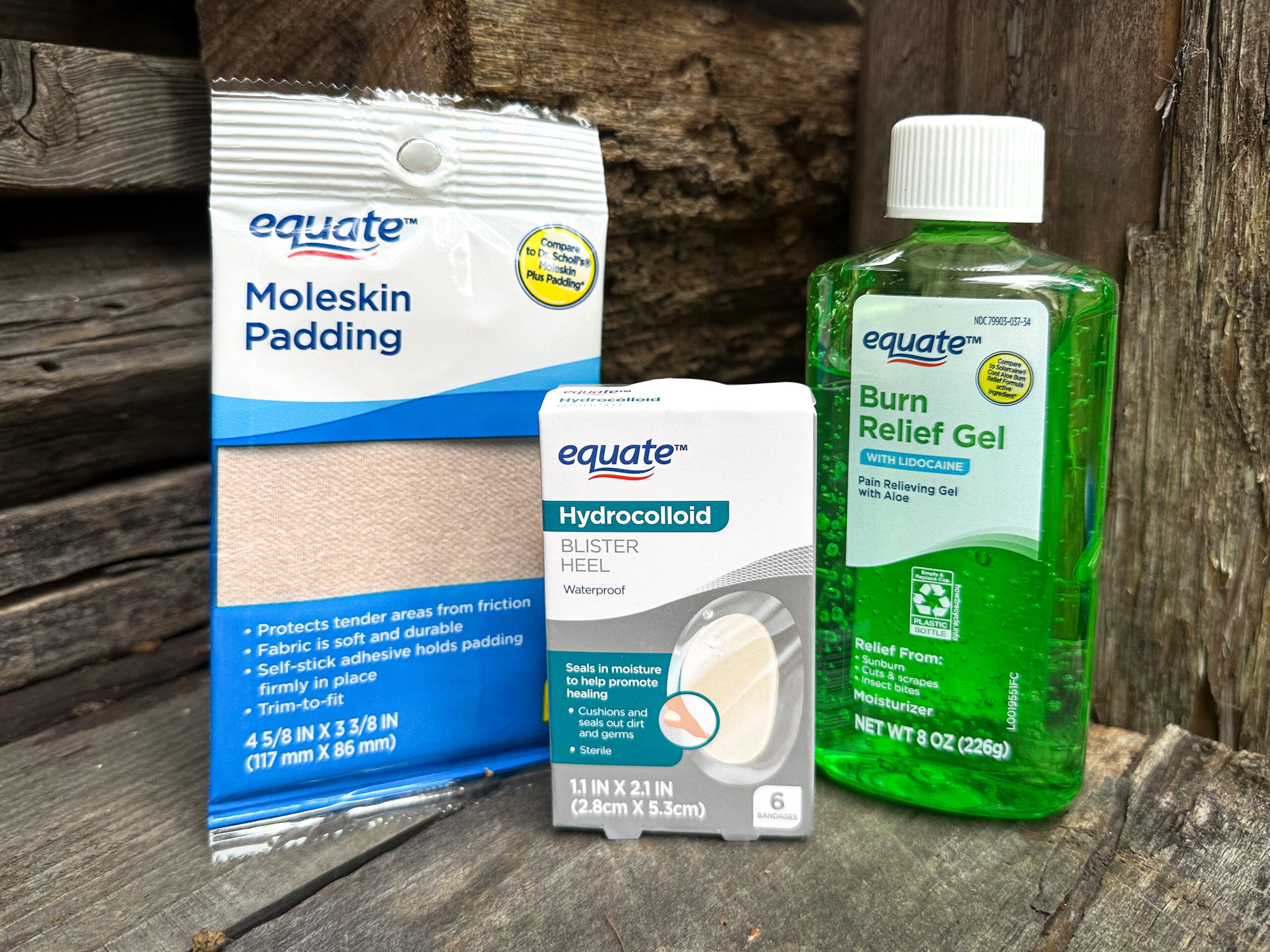Blisters: those pesky little bubbles that can turn an excellent hike or spot-and-stalk hunt into a slow, painful trudge. They are often formed by the most straightforward activities—breaking in new hiking boots, walking with wet feet, or a slight sock malfunction. Failing to treat blisters can to complications that are hard to overcome. Blisters can often occur in other situations as well. For example, if you’re using hand tools for an extended period without wearing gloves.
There is some confusion as to what a blister is—which results in come confusion as to the best way to treat blisters. These small fluid-filled pockets demand our attention. This guide will look at precisely what blisters are, how to prevent them, and how to treat blisters.
Table of Contents
- How to Treat Blisters
- How to Prevent Blisters
- What Are Blisters?
- What Causes Blisters?
- First-Aid Kit for Treating Blisters
- FAQs
How to Treat Blisters
The first thing know know when learning how to treat blisters is to that it is essential to resist the urge to puncture blisters that have not popped. The skin overhead acts as a barrier against infection. Protect such blisters by covering them with a gentle dressing like a blister plaster or gauze pad, warding off further friction. On the other hand, if a blister has already burst, cleanliness is paramount. Gently rinse the area with a mild soap and water. Then, a thin layer of antibiotic ointment will minimize infection risks. Surrounding the open wound with the ointment and keeping it out of the direct wound site is best. This should be followed by a non-adherent dressing to shield it. This dressing should be refreshed at least daily and more often when the situation allows it.
How to Prevent Blisters
Now that we’ve covered how to treat blisters, let’s focus on how to prevent them. Ensuring your shoes or boots are snug, neither too tight nor too slack, can make all the difference. Opt for synthetic hiking socks that can draw moisture away, lessening blister formation. Applying friction-reducing substances like powders or lubricants can further deter blisters. When engaged in lengthy activities, permit your feet intermittent respites. A moment to breathe without shoes can be refreshing and preventive. For hand blisters, using gloves when doing repetitive tasks is likely to cause hot spots that lead to blisters.
What Are Blisters?
A blister is a small pocket of body fluid (lymph, serum, plasma, blood, or pus) trapped between layers of skin. The typical non-burn blister is filled with serum, though sometimes it can contain blood or pus if infected. They are seen as a problem when, in fact, they are your body’s reaction when it needs protection. If you are overusing or have too much rubbing or friction on one area, then blisters will appear to protect that area. These pockets serve to shield and mend the underlying damaged skin.
Blisters often arise from friction or burns. They’re one of the most painful (and annoying) outdoor injuries you can get. To prevent them, choose appropriate gloves, footwear, and socks. If you get one. Despite your best efforts not to, don’t ignore them. Proper treatment and care make all the difference in stopping or continuing your actions. There is a difference in care for popped vs. unpopped blisters. Knowing how to treat each will lead you back into the woods and the water.
What Causes Blisters?
Friction is the main offender when it comes to blisters. Continuous rubbing causes the outer skin layer to move over the inner layer, separating the two and allowing fluid to collect in between. Burns are another, and perhaps more severe, reason that blisters occur. The heated portion of skin pulls apart from the layer beneath it to protect the body. Serum again fills the gap to keep the burn area from allowing in contaminants from the outside.
Allergic reactions and other medical conditions can also be to blame. This last type of blister can be from allergens found in the environment, like plants, or can also be caused by food or other items taken in through your digestive system. No matter the root cause, take the necessary steps to treat blisters immediately. In the case of allergy-based blisters, seek professional medical attention.

First-Aid Kit for Treating Blisters
If you’re serious about knowing how to treat blisters, you should possess a blister first-aid kit—especially if you’re prone to these skin irritations. The essentials include antiseptic wipes (cleanliness first!), antibiotic ointment or petroleum jelly (prevention over cure), moleskin (the renowned cushioned dressing), and gauze pads with tape (always shield that blister). I have seen military personnel slap duct tape on blisters and carry on. Kudos to them for their toughness and improvising in a bad situation. However, that is prolonging better care. When the tape is removed, it will cause considerable disruption to the skin and may very well cause a more significant problem.
FAQs
How do you make blisters heal faster?
Regular cleaning, avoiding additional friction, and protecting it will help expedite healing. Applying a soothing ointment, like aloe vera, can also be beneficial.
Is it better to pop a blister or leave it?
In most cases, it’s better to leave a blister unpopped. The skin serves as protection against infection. If a blister is very painful or in a location where it’s likely to pop on its own, it might be drained using a sterile needle.
Is Vaseline suitable for a blister?
Vaseline, or petroleum jelly, can help reduce friction and prevent blisters. In the 1990s, researchers compared antibiotic ointment to petroleum jelly as post-procedure wound care treatment. The study found that using petroleum jelly with an antibiotic and using the jelly without an antibiotic were similarly effective for preventing infection after a procedure.








